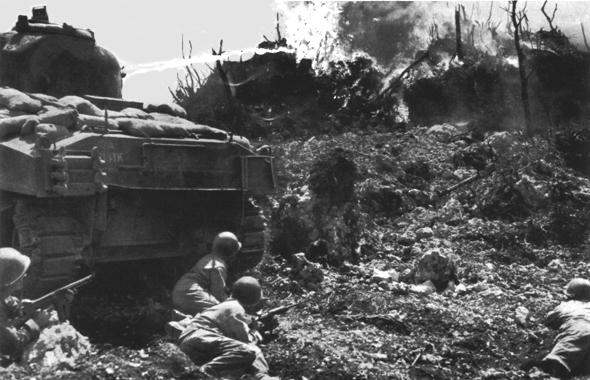On Okinawa, mopping up continues as the US 6th Marine Division prepares to land two regiments on the Oroku peninsula.
The US Army 77th Division and it’s supporting 706th tank battalion are pulled out of the line.
The remainder of the Okinawa campaign will be fought by the 24th Corps 7th and 96th Divisions and the 3rd Amphibious Corps 1st and 6th Marine Divisions.
On Okinawa, Japanese forces are isolated in the Oroku and Chinen peninsula.
The 7th Division cuts across the base of the Chinen peninsula to the south east coast. It finds the peninsula almost devoid of Japanese troops.
The Ninth Japanese “Floating Chrysanthemum” aerial suicide attack on American navy radar pickets begins.
Okinawa Background — The Engineer Special Brigade
Long time military wargamers — grognards — have long noted that the American military, and the US Army in particular, has always been very good at logistics. In the Cold War this was expressed as “Americans always love a technological solution.” Before the advent of highly technological military aviation, this was better expressed as “Americans always love a material and organizational solutions.”
In World War 2, this habit of institutional excellence was best expressed in the form of the US Army Engineer Special Brigade.
One of the little know facts of WW2 — thanks to post WW2 USMC PR campaigns — was that the US Army did more amphibious landings, did larger amphibious landings (See Normandy), faced tougher on-shore opposition (See German tank division counter attacks on beach heads at Sicily, Salerno and Anzio) and faced worse aerial opposition (Luftwaffe guided bombs in 1943 and the Japanese Kamikazes appeared first, with better pilots, lasting longer in worse geographic conditions in the Philippines at Leyte and Lingayen) than the US Marine Corps. More over, the US Army was better than the Marines when it came to providing supplies across the beach!


